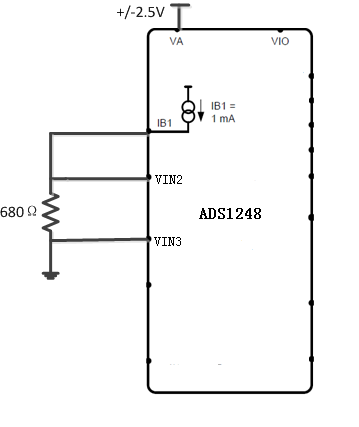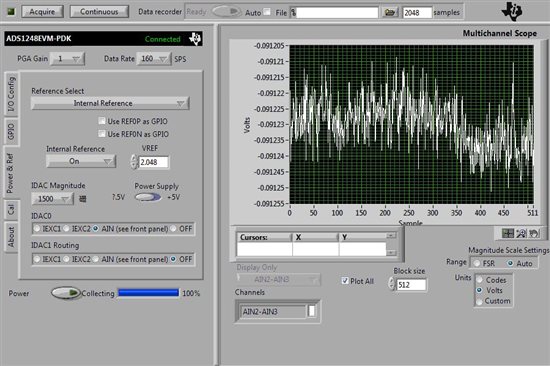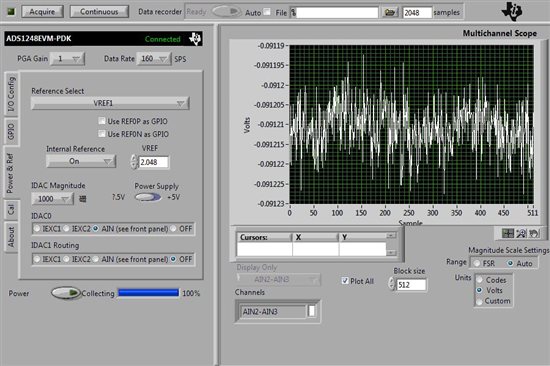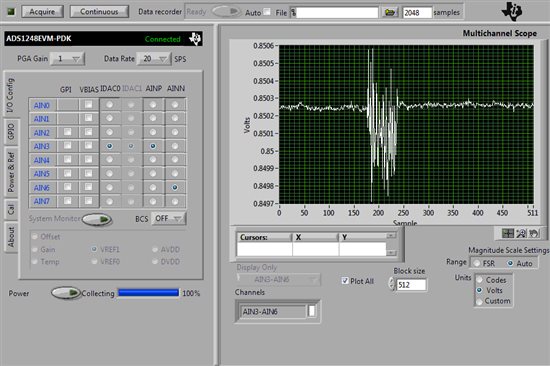Hello, I want to test ADS1248's source current mismatch, the test circuit and ADC Pro configuration is as below.

You see with different source current, the output voltage are the same. use multimeter to test the voltage on the 680Ω resistor , the showed voltage is nearly zero, even if I change the source current. Why? is there something wrong the ADC Pro setting. Thank you.






